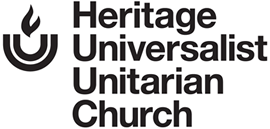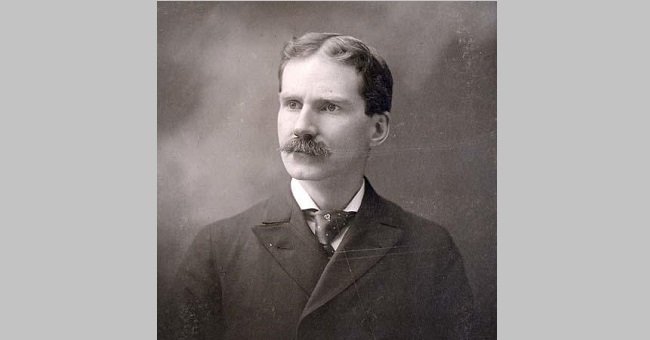The Stories of 42 Ministers Who Have Served Our Church
by Mike Roberts, Church Historian
Through the twenty years between 1880 and 1900, the church had a series of ministers who stayed for short periods and moved on. This time period was very difficult for the members, as they faced a number of seemingly insurmountable challenges.
William Henry Ryder
William Henry Ryder took the pulpit at age 40 on September 1, 1882. He had previously served 10 years as minister in Malden, Massachusetts, and several years in Watertown, Wisconsin. He was born in Elyria, Ohio, breaking the mold of our ministers being natives of the Northeast. Ryder’s stay in Cincinnati was brief, lasting 13 months. The church was in turmoil as was the city. Cincinnati was known as one of the most corrupt cities in the nation. Also, the industrialization of the city had created an environment of air pollution where visibility was lost in a sea of smog. Those who could afford it were migrating from the central city to the surrounding hills to escape the blight. The church was in financial difficulty and talk of abandoning our Plum Street church had begun.
While Reverend Ryder’s stay in our fold was brief, there are several points that should be emphasized regarding him. First, another William Henry Ryder was a minister in the Universalist Church and was one of its most respected preachers. Our Reverend Ryder was in no way related to the former Reverend Ryder and the two should not be confused. Secondly, three of Ryder’s children went on to great fame in other fields. One son, Jack, was the second football coach for Ohio State University, compiling a .500 record over four years of coaching. After leaving Ohio State, he became a sports writer for the Cincinnati Enquirer and his bylines are frequently quoted in the early history of the Cincinnati Reds. A second son, Arthur, became well-known as the translator of the Bhagavad Gita. He was recognized at the time as the foremost expert in Sanskrit. One of his students at the University of California was J. Robert Oppenheimer, the developer of the atomic bomb. A third son, Charles, became a doctor and one of the leading experts in the treatment of tuberculosis while running a sanitarium in Colorado Springs, Colorado.
As for Reverend Ryder, after leaving Cincinnati he joined the faculty of Andover College where he taught Greek and New Testament Interpretation. He served as a teacher there until his death in 1918.
Elmer Pember
Elmer Pember was born in Illinois and graduated from Tufts College. He served two ministerial duties in Massachusetts and New York before accepting the calling in Cincinnati in June 1884. Pember stayed with the church for three years. It was a turbulent time. The congregation was looking to flee downtown for the surrounding hills. The church’s financial troubles continued. Two months before Pember’s arrival, the city witnessed one of the worst urban riots in the history of the country. Over 40 died and hundreds were wounded and injured as the populace protested the corruption at city hall and in the courts. The center of the rioting was but a few blocks from the church.
Pember was active in the national church serving at a number of state conventions and was also active in the Universalist Missionary Board. After leaving Cincinnati, he ministered in Titusville, Pennsylvania, and Bangor, Maine. He retired there and became a farmer and raised Ayrshire pure bred cattle. He died in Bangor in 1914.
Elbert Watson Whitney
Pastor Whitney was born in New Hampshire, earned his Divinity Degree from Tufts College and served in Peabody, Massachusetts, and Brattleboro, Vermont, before coming to Cincinnati in 1887. During his three-year tenure, he oversaw the move from the Plum Street facility to a rented church in Peebles Corners on McMillan near Gilbert. A search of that area shows no signs of a church so it must have been torn down long ago.
From Cincinnati, he moved on to Milford, Massachusetts and finally to Taunton, Massachusetts, where he served the longest ministerial term in that church’s history. He also became Vice President of the Universalist Historical Society. He died in Nelson, New Hampshire, in 1932.
Harry Lee Canfield
Henry Canfield was born in Ohio, the son of a Universalist minister. He was ordained in 1888 and came to Cincinnati in 1891. Little is recorded of Canfield’s term in Ohio but one of the hallmarks of his career was his teaming with his wife, Mary Grace. Henry stayed in Cincinnati for three years and then he and his wife became active in the formation of the Young People’s Christian Union. The Universalist Church had started this organization to serve members under the age of 35. Canfield became the organization’s first national secretary and Mary Grace headed its Junior Union. Henry went back to the pulpit in the early 1900’s and eventually served as a minister in a number of North Carolina towns under the auspices of the National Missionary Association.
Mary Grace went on to become a historian, writer and photographer. She wrote a book detailing Lafayette’s visit to Vermont during his 50th anniversary tour in 1826. She was active in women’s suffrage and after the passage of the women’s voting rights amendment turned her energies to the League of Women Voters. During her travels she took numerous photographs which now are in the collection of the Vermont Historical Society, the Andover/Harvard Collection and the University of North Carolina library. Reverend Canfield died in 1942 and Mary Grace in 1946.
Ulysses Sumner Milburn
Ulysses Milburn came to Cincinnati as the right man for the right time. He was born on a farm east of Columbus, earned his divinity degree at St. Lawrence College and preached at London, Ohio, and Baltimore, Maryland, from which he came to Cincinnati. While in Baltimore, he served as the assistant to Royal Pullman who was instrumental in originating the Mother’s Day ceremony.
Milburn came to Cincinnati when the First Society was contemplating building a new church. He was the driving force necessary to see the completion of that goal. He stayed four years from May 1894 to August 1898. The church building on Essex in Walnut Hills was nearing completion and Milburn felt his work in Cincinnati was done. He went on to serve churches in New York, Kansas City and Massachusetts.
Milburn also was a world traveler, often lecturing at church and community events about those experiences. In addition, he was recognized as the owner of one of the largest collections of items related to Nathaniel Hawthorne. These included books, manuscripts, letters and photos related to the author. Milburn donated these to St. Lawrence where they still are considered a primary resource for Hawthorne studies.
It is rare that we can hear the words of a man who served our church well over a hundred years ago. However, in a letter dated May 26, 1938, Milburn sent the following letter to our church when it celebrated its 111th birthday. He wrote:
If I were an old man I presume I would reminisce; of course, I am not! (Ed. He was 72 years of age) But if I were, I would recall my coming to Cincinnati from Baltimore in April, 1894; the installation and reception, the Rev. J. Frank Thompson of Akron preaching the sermon at the former and Mrs. Charles H. Stevens presiding at the latter. Our services were held in a little rented building on McMillan Street west of Gilbert Avenue. Even before the reception a committee had been appointed to find a site for a new church, consisting of George C. James, Charles H. Stephens and A. P. Henkel. D. F. Saunders was President of the Board of Trustees, John D. S. Stevens, Clerk and George L. Utter, Treasurer.
The whole tone of preaching has fortunately changed since those far-off days. Then, theology was the dominant note. I happened by some chance, to be able to have a large space in the public press nearly every Monday. The Rev. G. R. Robbins of the Lincoln Park Baptist Church preached on “The Back Door to Hell”. In two weeks, the sermon was on “Is There a Back Door to Hell?” which was published almost in full. We are grateful that today hearts are fed with something better than the dry husks of creeds, however important correct thinking may be.
Go on to greater things! With Browning “Greet the future with cheer.” Your church beseeches “that ye be not soon shaken in your mind” but that you be steadfast, unmovable in your faith in God and in his laws which govern the spiritual world with infinite wisdom. It also tells you to “keep thy heart with all diligence, for out of it are the issues of life”—a life of service, of love, of happiness, of devotion and prayer.
God bless you, everyone. Faithfully and affectionately, your former pastor, U. S. Milburn
Reverend Milburn died in 1956 at the age of 90.
Image: Harry Lee Canfield
Image source: Harvard Divinity School Library

